How to choose the best pruning shears for your needs?
When you're working in the vineyards, one of the most important tools you'll need is the pruning shears. A pruning shears is an indispensable tool for any viticulturist, horticulturist or arborist. However, with so many choices available on the market, it can be difficult to choose the pruning shears for your specific viticultural needs. In this article, we will guide you through the key elements to consider when selecting a pruning shears to help you make the best choice.
The different types of secateurs
Several types of pruning shears can help you with your tasks, depending on the intensity of your work.
A person who uses his pruning shears very occasionally will not have the same expectations as someone who uses them every day. For the latter, it will be important to take into account the lifespan of the pruning shears. It's essential to find a product that's solid and offers serious guarantees for repeated use. Comfort of use is also very important. If you spend days on end handling your pruning shears it's very important that you don't have any problems using it, and that you don't feel any pain even after a long day.
So don't hesitate to ask about the weight and length of the pruning shears you're planning to buy. There are several types of pruning shears to suit different hand sizes.
Manual pruning shears are less expensive and ideal for occasional use. Electric or battery-powered pruning shears, on the other hand, have the advantage of superior performance, making them more suitable for professional use.
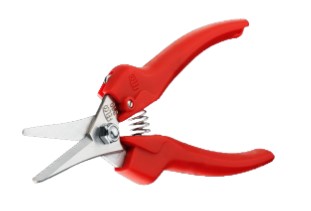
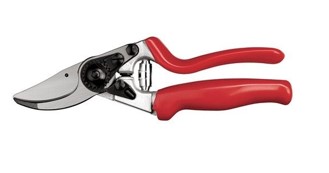
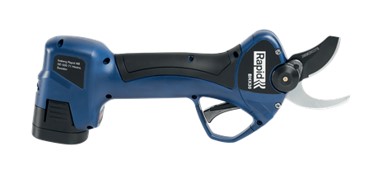
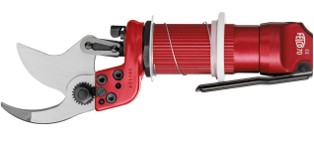
Criteria to consider when choosing pruning shears
Choosing the right pruning shears will help you to :
- Reduce stress
- Reduce work intensity by limiting effort and the risk of injury
- Save time and reduce fatigue
- Avoid shocks
Right- or left-handed
There are 2 types of pruning shears: right-handed and left-handed. They are distinguished by the arrangement of the blades.
The top blade is on the right for right-handed pruning shears, and on the left for left-handed pruning shears.
Type of cut
For viticulture, it is essential to choose pruning shears capable of making a clean, precise cut. The cutting head is the heart of the product.
For pruning shears, the cutting head is in two parts: the blade and the counter-blade. In the case of saws or knives, the cutting head consists of just one part, the blade. In addition to having the right geometry, a good cutting head needs to be made of the right materials and have undergone the right treatments, giving it the perfect balance of hardness, elasticity and toughness.
Pruning shears with bypass cutting heads are generally recommended, as they offer a clean cut without crushing the stem. This promotes better healing and reduces the risk of disease.
Whereas anvil-head pruning shears, generally 2-hand pruning shears, offer limited cutting effort thanks to a straight cut of the blade into the wood, but it is more difficult to maintain a clean cut (crushing of the wood).
What's more, a pruning shear used in arboriculture will be completely different from those used in viticulture, for example. Arboriculturists generally look for large secateurs for cutting mainly at height, whereas viticulturists make cuts at chest level.
The type of plant you wish to cut is also a factor not to be overlooked. E-viti offers pruning shears for cutting small and large branches, small or dry wood, and pruning shears for picking fruit such as grapes.
Appropriate size
Pruning shears can vary in size, so it's important to choose a size suited to the size of your vines and ease of handling. If you're working on smaller vines, a compact pruning shear might be ideal. For larger vines, opt for pruning shears with a longer blade to reach distant branches.
Comfort
Working in the vineyards is a demanding job, so the comfort of your pruning shears is important. Look for a model with an ergonomic handle that offers a comfortable grip and reduces fatigue during long periods of pruning. A non-slip handle can also be beneficial for a better grip.
Felco, offers pruning shears with a rotating handle, which allows the force to be distributed through several muscles in the hand. These models limit the effort and fatigue of these muscles compared with a fixed handle. In practical terms, the rotating handle rolls in the hand. The absence of friction prevents the formation of blisters in the palm. You can make up to 5,000 cuts a day without fatigue.
Manufacturing quality
The quality of your pruning shears is crucial, as they will be used intensively in the vineyard. Opt for a high-quality pruning shear with corrosion-resistant stainless steel blades. Make sure the pruning shears are strong, durable and able to withstand regular use in sometimes difficult conditions.
Maintenance and replacement of wearing parts
To maintain good cutting quality and ensure adequate cutting effort, it is essential to maintain your pruning shears. To do this, you need to clean and remove rust, then grease the tool to reduce friction between the cutting head components. You can also sharpen the blade to ensure a clean cut that won't injure the plant.
After this maintenance, if your pruning shears lose efficiency, it's time to replace the wearing parts, i.e. the blade, counter-blade and spring. At Felco, all parts can be easily replaced without the need for special tools.
Find all Felco maintenance products and spare parts on this page.
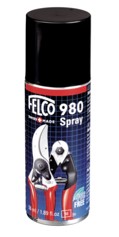
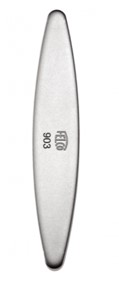
By following these tips, you'll be able to choose the ideal pruning shears for your viticultural needs. Keep in mind cutting quality, appropriate size, build quality, comfort and professional advice. Invest in a quality pruning shear that will accompany you throughout your work in the vineyard and help you achieve the best results for your harvest.



